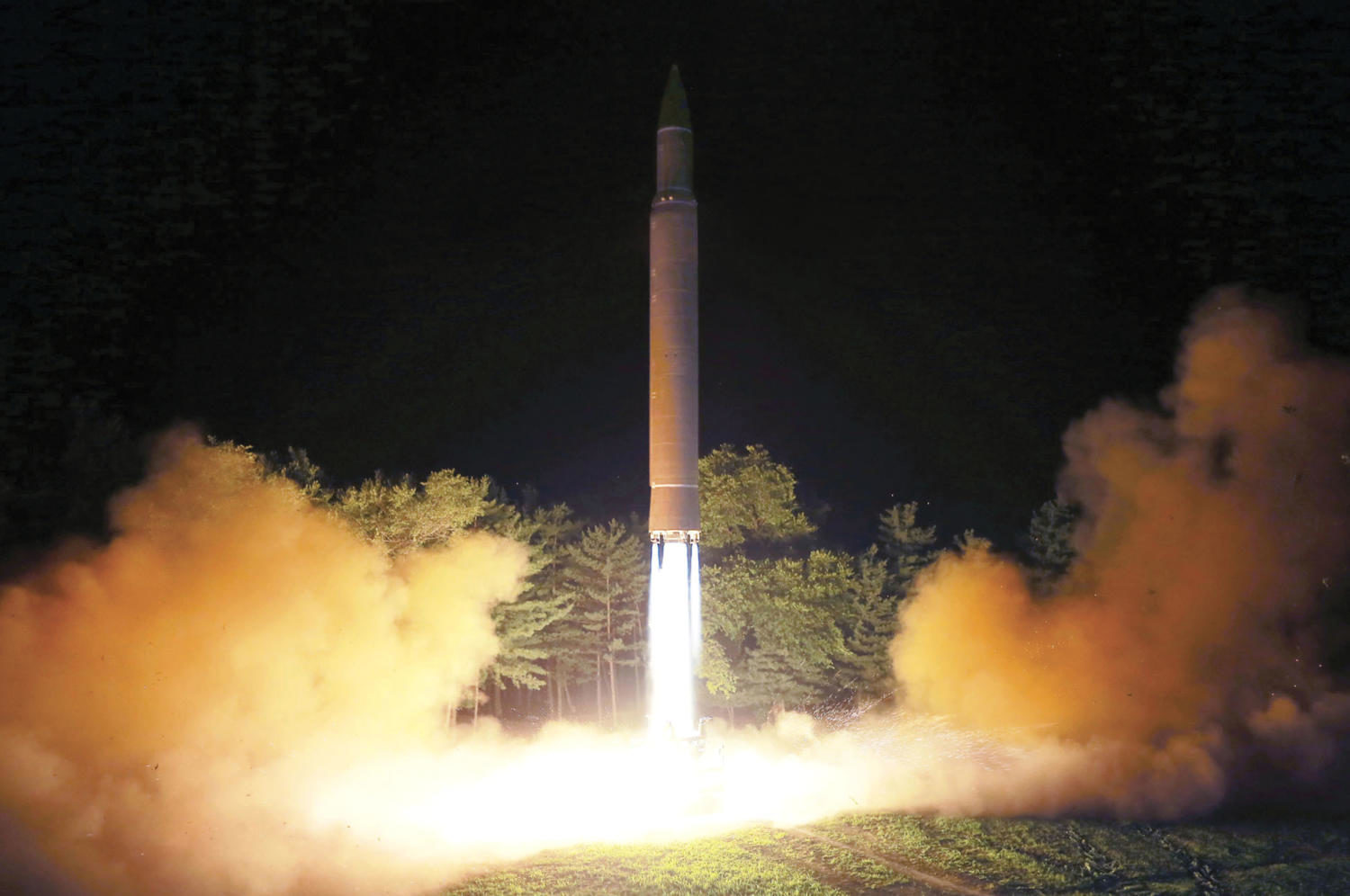North Korean nuclear threats could hit close to home — literally
FILE – This July 28, 2017, file photo distributed by the North Korean government shows what was said to be the launch of a Hwasong-14 intercontinental ballistic missile at an undisclosed location in North Korea. America’s annual joint military exercises with South Korea always frustrate North Korea. Some experts say North Korea is mainly focused on the bigger picture of testing its bargaining power against the United States with its new long-range missiles and likely has no interest in letting things get too tense during the drills. (Korean Central News Agency/Korea News Service via AP, File)
August 21, 2017
A year ago most Americans would’ve laughed off the idea of nuclear war with North Korea, but as threats and missile tests have increased in frequency, the issue has become far from a laughing matter.
The United States and North Korea are currently at a nuclear standoff, one that parallels the Cold War that consumed American politics for almost half of the 20th century.
According to a recent Washington Post article, the nuclear threat could hit far closer to home for Loyola University students than most would expect.
According to the article, a photo released in 2013 in association with a media report threatening the United States could offer details regarding potential targets across the country, one of which analysts at the Defense Intelligence Agency say is in the state of Louisiana.
The photo in question shows four missile trajectories into the United States, two of which are clearly visible. Those two targets are Honolulu (home to U.S. Pacific Command) and San Diego, the Pacific Fleet’s home port. A third trajectory is slightly obscured by a North Korean official blocking the map, but analysts have safely assumed that target is Washington. The fourth trajectory is entirely obscured, but analysts are confident that the fourth target is Barksdale Air Force Base in Shreveport, Louisiana.
The base in rural northwestern Louisiana seems like an odd choice at first, until one considers that the base is home to Air Force Global Strike Command, which controls U.S. bomber missions around the globe — including recent flyovers near the Korean Peninsula.
The question is, then, if Barksdale was hit by a nuclear missile, would New Orleans be at risk? The answer is yes, but not directly.
According to the Defense Intelligence Agency, military officials estimate that the largest North Korean nuclear weapon is no more than 30 kilotons. To put that in perspective, the largest nuclear weapon possessed by the Soviet Union was roughly 100 megatons, which is over 3,300 times the size of the North Korean weapon.
The immediate radius of a North Korean nuclear detonation is roughly 1.5 miles, versus 46 miles for its USSR counterpart. The immediate damage would be catastrophic, but not nearly as widespread as a Soviet weapon, and certainly not able to reach New Orleans.
With all of that said, the radioactive fallout of the explosion would impact the city. Fallout is when the radioactive particles that are dispersed high into the atmosphere as a result of a nuclear explosion return to the ground, sometimes spreading out for hundreds of miles in every direction. Radioactive fallout can have long-term impacts on health, and can lead to the development of cancer in those who have been exposed.
As of right now, Barksdale is on the edge of the range that U.S. Department of Defense officials estimate North Korea could reach with their intercontinental ballistic missiles, but could be a legitimate target for the isolationist country.








